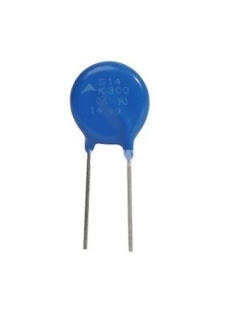What is an MOV?
Metal Oxide Varistors AKA MOVs are electronic devices designed to suppress surges in electrical and electronic circuits.
A Metal Oxide Varistor
is a non-linear surge suppressor device, which is used to suppress sudden,
high abnormal voltage transients or surges, especially during the power ON of a
switch or natural thunder lightening situations.
This is mostly
used in sensitive electronic circuits to make them safe against such
catastrophic occurrences.
MOV is a
non-polar device, which means you can connect it with any side. It is a voltage
dependent device, which means this device will react to the changes in voltage
conditions.
Therefore, MOV
is specified to trigger whenever the rated voltage magnitude across their
connections is exceeded.
The voltage
rating at which an MOV may be defined to fire and short the transient to the ground
is called its ‘clamping voltage’.
For an example,
if the clamping voltage rating of an MOV is 420V then it will be switched ON
whenever the voltage across it surpasses this value (420V).
When an MOV is
switched ON or is triggered by a high voltage surge it shorts the voltage spike
across its terminals, which prevents the spikes from entering the vulnerable
electronic device attached next to it.
Here non-linear
property works, it means there will be no action from MOV side until voltage
across it goes above the rated voltage, and it will work when the voltage
crosses the voltage limit.
How to connect an MOV?
Connection of
MOV is very simple; MOV is across the Voltage via a fuse or fusible resistor.

